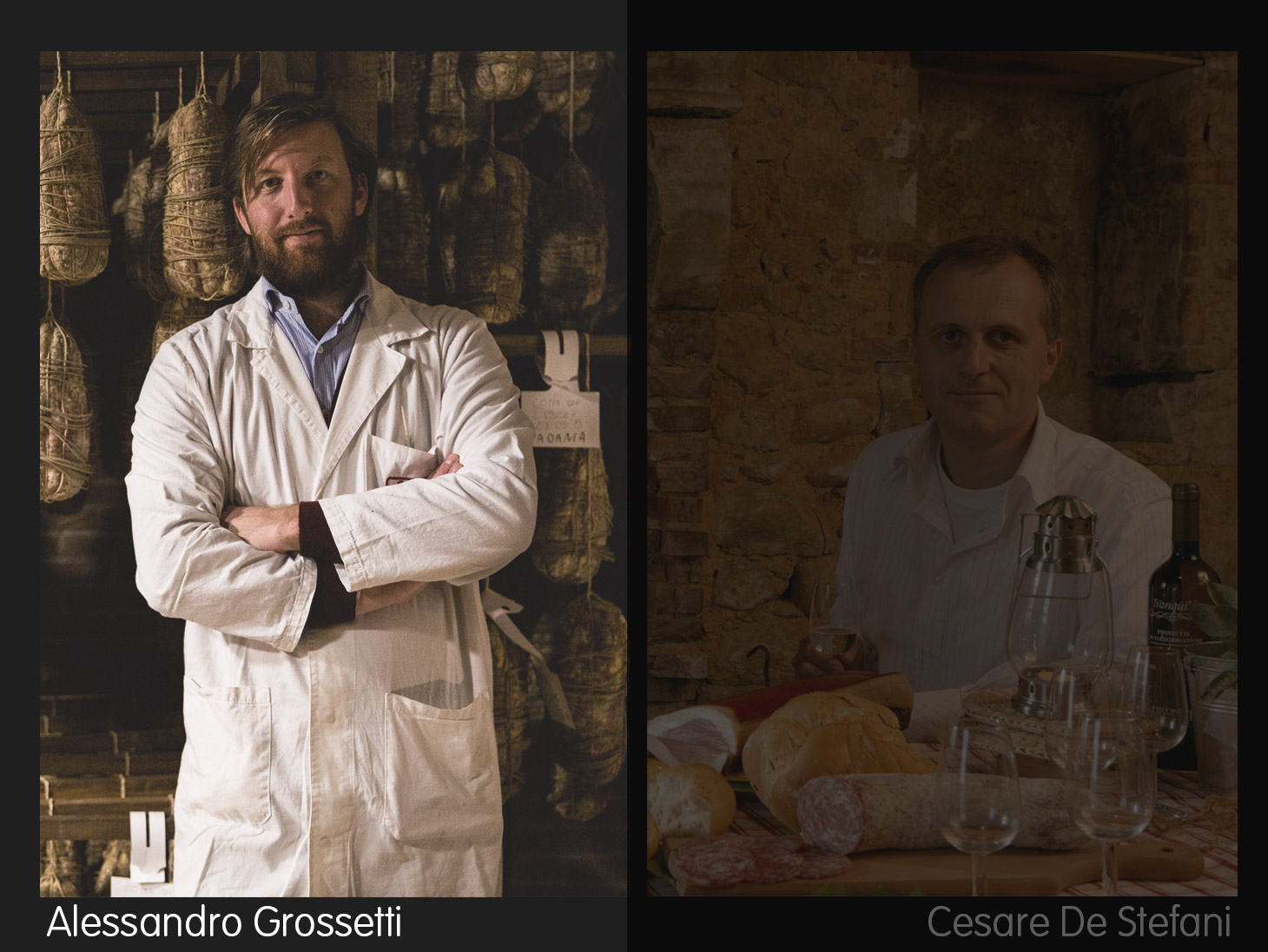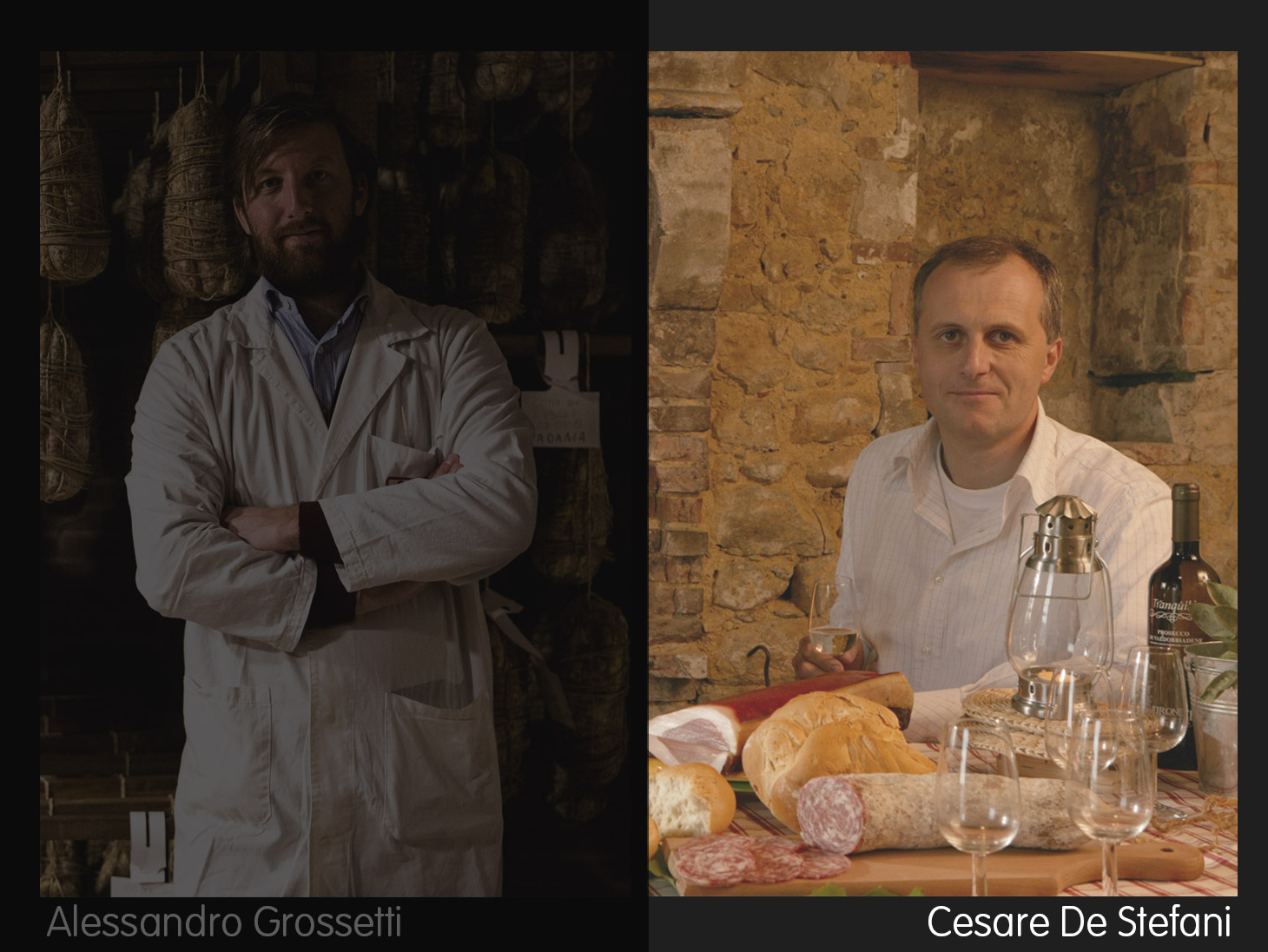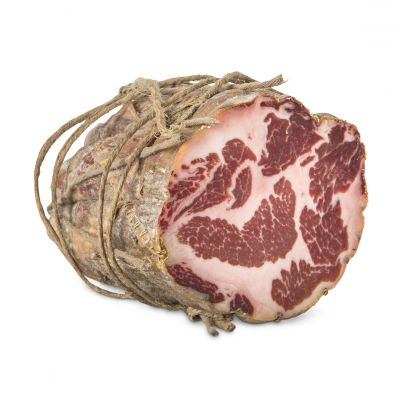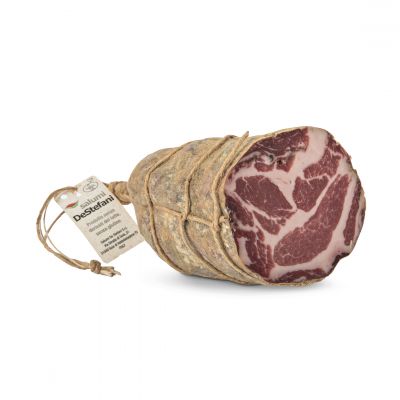Ossocollo from Treviso or Coppa from Piacenza? The difference is not only in the names
⏱ 3 MINUTES READING
We interviewed Alessandro Grossetti and Cesare De Stefani to understand the differences between their products
GROSSETTI
With its coppa, pancetta and salame, Piacenza is the only European province to have three certified PDOs.
Among these products, Coppa piacentina is the finest cut, the “queen of cured meats”, a part of the tradition that the Salumificio Grossetti, based in Val Tidone, the western of Piacenza valleys, is carrying on from the long gone 1875.
“This is a mainly farming land, where breeding pigs was the everyday routine of each family – tells Alessandro, son of Antonio and part of the Grossetti’s fifth generation of butchers -. In this area cured meats are produced since the age of ancient Romans, because it was crossed by the via del Sale (salt route), that connected the sea with the Po valley. Thanks to this preservative, the development of the art of charcuterie occurred naturally”.
The Grossetti’s business initially started with a butcher’s shop, where they offered typical cured meats of the area.
Then in the 70s Antonio and his father launched a real artisanal charcuterie production, in 2000 Antonio’s nephew also entered the company and in 2010 was the turn of the son Alessandro: “We are proud to continue such a long tradition, that we try to preserve at its best, starting from the quality of raw materials and the care for the manufacturing process”, explains Alessandro.
Today the company produces about 450-500 pieces of Coppa piacentina per week: the microclimate of the Val Tidone has always been the best supporter for a perfect aging.
DE STEFANI
ll has started in a small butcher’s shop of the town, in Valdobbiadene, a land that is mainly devoted to the wine production, where wine cellars prevail.
It was Giuseppe De Stefani that opened it in 1958, and after the launch he also engaged his children in the job: “When I was young, I started following in my father’s footsteps – tells us Cesare, that today is driving the company together with his brother Giacomo – later in the 80s I began dreaming big.
My family used to produce a few cured meats for the shop, but I was imagining a small enterprise. It was a winning bet, because nowadays our company has become a synonym for high quality in the whole country, thanks also to the partnership with Valsana: I still remember when I brought them the first salame to be tasted, I was very young and we almost grew up together”.
Coppa, which in venetian is called Ossocollo, is together with soppressa one of the well-known products of the Pedemontana (prealps area) and, in the case of the Salumificio De Stefani, it is the result of an ancient recipe: “It was my uncle who revealed me his recipe for the Ossocollo, when I was not even 20. I can clearly remember that moment: I was sitting in the kitchen and he gave me his secret, explaining me in detail all the ingredients to use, the way of adding spices and the meat processing methods”.
Nowadays the artisanal charcuterie De Stefani produces around 500-600 Ossocollo pieces per week: for the most part the work is still manual and the recipe is always the original one.
L'INTERVISTA DOPPIA
1. Name of the product?
2. Origin of the raw material?
100% Italian meats, that come from breeding farms in Emilia Romagna and Lombardy.
3. Which cut do you use?
The lateral muscles of the pork neck, cutted to the fourth vertebra.
4. How does the salting works?
We dry cure meat with salt twice, with a massage that allows the salt to seep into the meat. We wait a week from a salting to another.
5. Spices used for the seasoning?
Salt, pepper, cinnamon, cloves, a little bit of nutmeg and laurel leaves.
6. Which type of casing?
Layer of pork leaf lard.
7. Which is the perfect aging?
For the coppa piacentina DOP the regualation foresees at least six months of aging.
8. Why is your product different?
It is one of sweetest coppa in Italy: thanks to our microclimate and to the slow aging process we do not need to put too much salt in the meat.
9. How do you suggest preserving it?
If in one piece, it is well if hung in cool but humid cellar. If it is vacuum-packed it is better to store it in the fridge, if already opened wrap it with a cling film or in a wet towel to avoid the product drying out.
10. How do you suggest tasting it?
In a sandwich or as an appetizer in a board of cured meats.
11. Which wine would you match in with?
It is traditionally paired with a sparkling red wine like Gutturnio piacentino, that gives freshness and cleanse the taste of fat in the mouth.

1. Name of the product?
Ossocollo, that reminds us of the producing region.
2. Origin of the raw material?
Fresh butchered meats of pigs raised within Veneto, Emilia Romagna and Lombardy.
3. Which cut do you use?
The two lateral parts of the pork neck until the third or the fourth vertebra.
4. How does the salting works?
It lasts about 10-12 days. Every two days the meats are massaged manually, so that the muscle can relax and better receive salt, aromas and spices.
5. Spices used for the seasoning?
Cervia salt, Tellicherry extra bold pepper, cinnamon, cloves, rosemary, laurel leaves and a little bit of Marsala.
6. Which type of casing?
The bombeana, which is the cecum of a bovine.
7. Which is the perfect aging?
It lasts at least five months, in rooms with a humidity range from 70 to 90%.
8. Why is your product different?
Because of the spices, the wine used in the curing process and the casing that gives to the cured meat the typical characteristics and aromas.
9. How do you suggest preserving it?
I suggest preserving it at room temperature also if already opened. The most important thing is the right humidity.
10. How do you suggest tasting it?
It is delicious with fresh bread or in a board of cured meats. But you can also wrap a white meat steak with some slices of it and cook it: it will become more tasty and crunchier.
11. Which wine would you match in with?
I would choose a Prosecco col fondo (prosecco that has been aged on its lees), naturally fermented: it has its own minerality and tiny bubbles that do not disturb. A merlot is also a good pairing.
Giulia Basso
Selezione di Sapori Director





